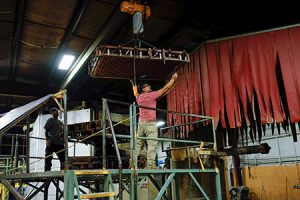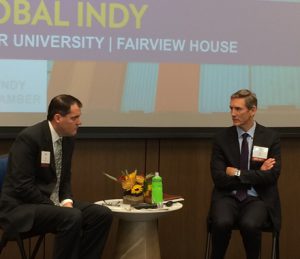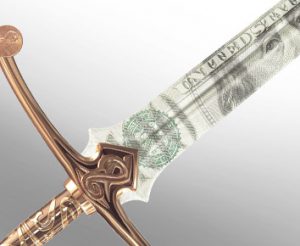
Trade tensions put Indiana farmers and manufacturers in crosshairs
As the United States and China face off over tariffs and trade policy, some of Indiana’s most important industries are right at the center of the dispute.

As the United States and China face off over tariffs and trade policy, some of Indiana’s most important industries are right at the center of the dispute.
Now in a tit-for-tat fight with the United States, the global superpower vowed Friday to retaliate if President Donald Trump makes good on his threat to apply tariffs to an additional $100 billion worth of Chinese goods.
President Trump’s surprise move came a day after Beijing announced plans to tax $50 billion in American products, including soybeans and small aircraft, in response to a U.S. move this week to slap tariffs on $50 billion in Chinese imports.
The trade gap has continued to rise since Trump entered the White House partly because the U.S. economy is strong and American consumers have an appetite for imported products and the financial wherewithal to buy them.
Some Indiana farmers are concerned that the struggling soybean industry could face another blow if China imposes tariffs on U.S. soybeans.
The Indiana Economic Development Corp. announced Monday afternoon that Holcomb will spend Monday through Wednesday in Canada to promote investment in the state.
Unswayed by Republican warnings of a trade war, President Donald Trump ordered steep new tariffs on steel and aluminum imports to the U.S. on Thursday, vowing to fight back against an "assault on our country" by foreign competitors.
President Donald Trump's administration appears unbowed by broad domestic and international criticism of his planned import tariffs on steel and aluminum, saying the president is not planning on exempting any countries from the stiff duties.
Ordering combative action on foreign trade, President Donald Trump declared Thursday that the United States will impose steep tariffs on steel and aluminum imports, escalating tensions with China and other trading partners.

In central Indiana, 90 percent of companies sell to domestic customers alone, meaning they are missing out on 80 percent of the world’s buying power.
The United States won't settle for cosmetic changes to the North American Free Trade Agreement, the top U.S. trade negotiator said, as negotiations to rework terms of the pact began.
Donald Trump’s threats to use taxes as “retribution” against U.S. companies that move jobs overseas are legally dubious, tax specialists say—and they’re prompting resistance from some Republican leaders who fear a coming era of economic protectionism.

Hoosier businesses hope negative campaign talk about nation’s trade deals won’t restrict free flow of Indiana goods outside U.S. borders.

Tom Linebarger points to the company’s Seymour plant where 800 employees produce high-speed diesel engines—70 percent of which are exported globally—as a key reason he believes free trade is good for the Hoosier worker.
The deficit rose to $44.5 billion in June, 8.7 percent higher than in May. It was the biggest gap between what America sells abroad and what the country imports since last August.
JPMorgan Chase provided $200,000 to fund the chamber’s GoGlobal Export Acceleration Grant program, which will target smaller companies and provide up to $5,000 in matching funds to cover business and marketing costs associated with new export activity.
China matters very much to Indiana’s economy, and its significance will only grow.
Exports have been hurt this year by the rising value of the dollar, which makes U.S. goods less competitive on overseas markets, and weaker economic growth in China and other major export markets.
Pence will travel with a delegation of Hoosier business leaders to Beijing, Shanghai and Hangzhou, the capital city of Zhejiang Province, Indiana’s Chinese sister-state. The delegation plans to leave May 9 and return May 16.

Hoosier businesses and consumers face a dynamic not seen in a generation—a dollar significantly more muscular than many competing currencies. Experts predict the dollar’s clout and the pros and cons of that power will endure for a year and possibly as long as three.